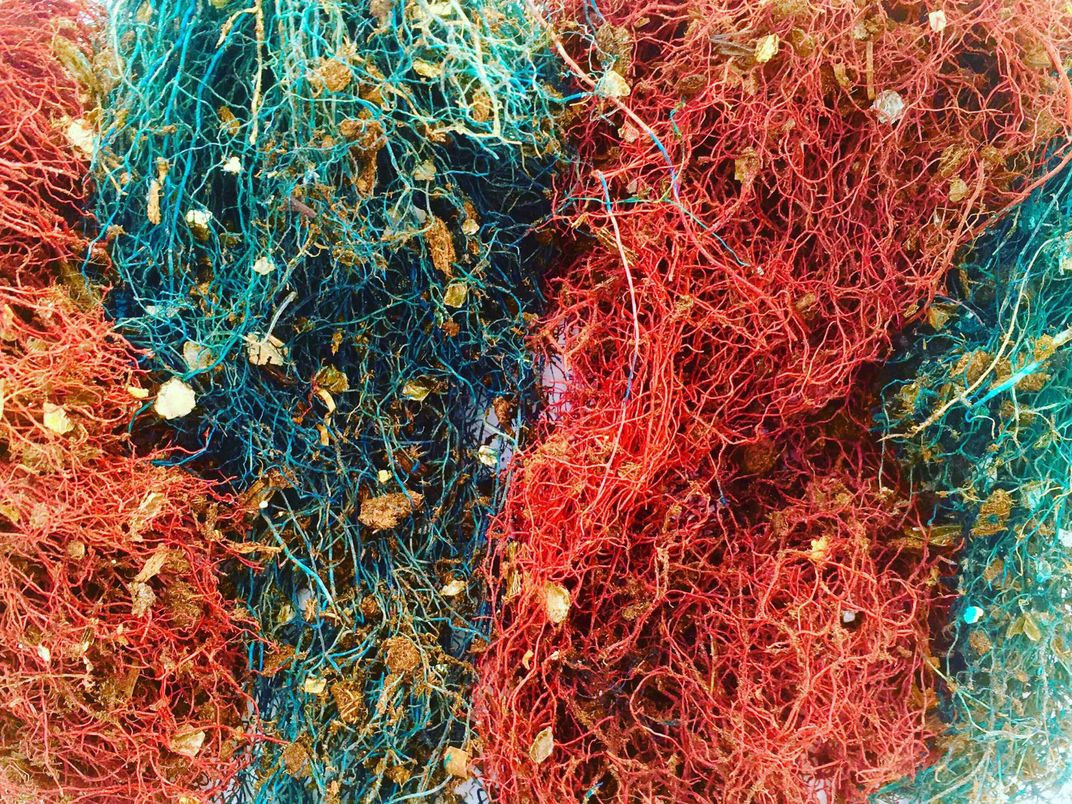How Pepper Plants Pick the Perfect Path for Putting Down Roots
Two plants in the same pot must find a way to share the water and nutrients in the soil
/https://tf-cmsv2-smithsonianmag-media.s3.amazonaws.com/filer/e8/67/e867343c-9417-45ff-9638-be1834c76c3c/2020_dec17_greenhouse.jpg)
When plants grow close together, an invisible competition is underway. Each plant must reach and absorb as many nutrients with its roots as possible, all while its neighbor attempts to do the same.
Scientists have long wondered whether plants grow long roots in an attempt to reach more nutrients, or fewer, shorter roots because they’re stymied by competition. A new study published on December 4 in the journal Science presents a new model of root growth that suggests the truth may be somewhere in between. The mathematical model takes into account both the mass of the roots and their distance from the plant’s stem, both of which affect how much energy the plant needs to invest to keep them working, Elizabeth Pennisi reports for Science magazine.
Once the researchers created their model, they tested it by growing real pepper plants in a greenhouse at the Museo Nacional de Ciencias Naturales in Madrid. Some of the peppers were planted in their own section of soil, while others doubled up. When the researchers compared the growth patterns of the real plants to their model, the results matched. A pepper plant crowded by neighbors tends to keep its roots close to the stem and densely packed, instead of sending out many long-reaching roots like single-potted plants have the luxury to do.
“This study was a lot of fun because it combined several different kinds of mind candy to reconcile seemingly contradictory results in the literature,” says Princeton University ecologist Stephen Pacala, the senior author of the new research, in a statement. “A clever experiment, a new method for observing root systems in intact soils and simple mathematical theory.”
Plants need to make the most of wherever they’ve been planted, which means maximizing the nutrients and water they absorb from the soil. They absorb those resources with roots, so to get more resources, a solo plant can invest in both dense roots near its stem and long, tendril-like roots that gather nutrients from faraway dirt. The long roots take extra energy to maintain since they’re larger, but it can be worthwhile if the root finds an untapped patch of soil.
When a plant has a neighbor, investing in long, horizontal roots is less likely to return a worthwhile reward. In some predictions of root competition, scientists worried that a “tragedy of the commons” might take place, where the plants each try to hoard all resources they can reach, to the detriment of the whole community, per Cosmos. Some past research had found in some cases that plants increased the total mass of their roots when faced with competition; other studies had concluded the opposite.
“There was all this controversy,” says Princeton University ecologist Ciro Cabal to the New York Times’ Cara Giaimo. Cabal, the lead author on the new study, realized that past researchers hadn’t taken the root length into account. The new model uses tools from game theory and factors in extra-long roots’ energy requirements. Cabal tells the Times, “We incorporated space. And we found this new theory.”

The model suggests that pepper plants with close neighbors will not grow many long roots. However, the plants invest extra energy in growing more roots close to home. When all of the plants use the same strategy, they all stay out of each other’s way. But the research found that the plants aren’t necessarily being cooperative—they’re still selfishly trying to maximize their own nutrients.
After creating their model, the researchers set up an experiment in a greenhouse to see how the roots grew in real pepper plants. The team planted their peppers in construction gutters as pots. Some of the plants got a whole plot alone, while others were paired up, planted just four inches apart, per Science magazine. The plants all received equal sunlight, water and fertilizer, and paired plants received injections of red or blue dye so that researchers could tell their roots apart later. After allowing the plants to grow, the scientists dug up the roots and measured the root type, length and position in the soil. The results matched the mathematical model.
California State University plant biologist Jochen Schenk, who was not involved in the study, tells the New York Times that the new model “provides an excellent baseline prediction for how root systems might behave in the presence of neighbor” and clarifies contradictory findings from the past. But, he adds, “I would not accept the claim that a single test with one plant species can tell us what plants will do in general.”
The researchers plan to further test their model by studying other plant species in other settings, reports the New York Times. And Science magazine reports that the findings, if confirmed, could help future scientists in efforts to genetically engineer more efficient crops or study the role of roots in storing carbon that plants remove from the atmosphere.